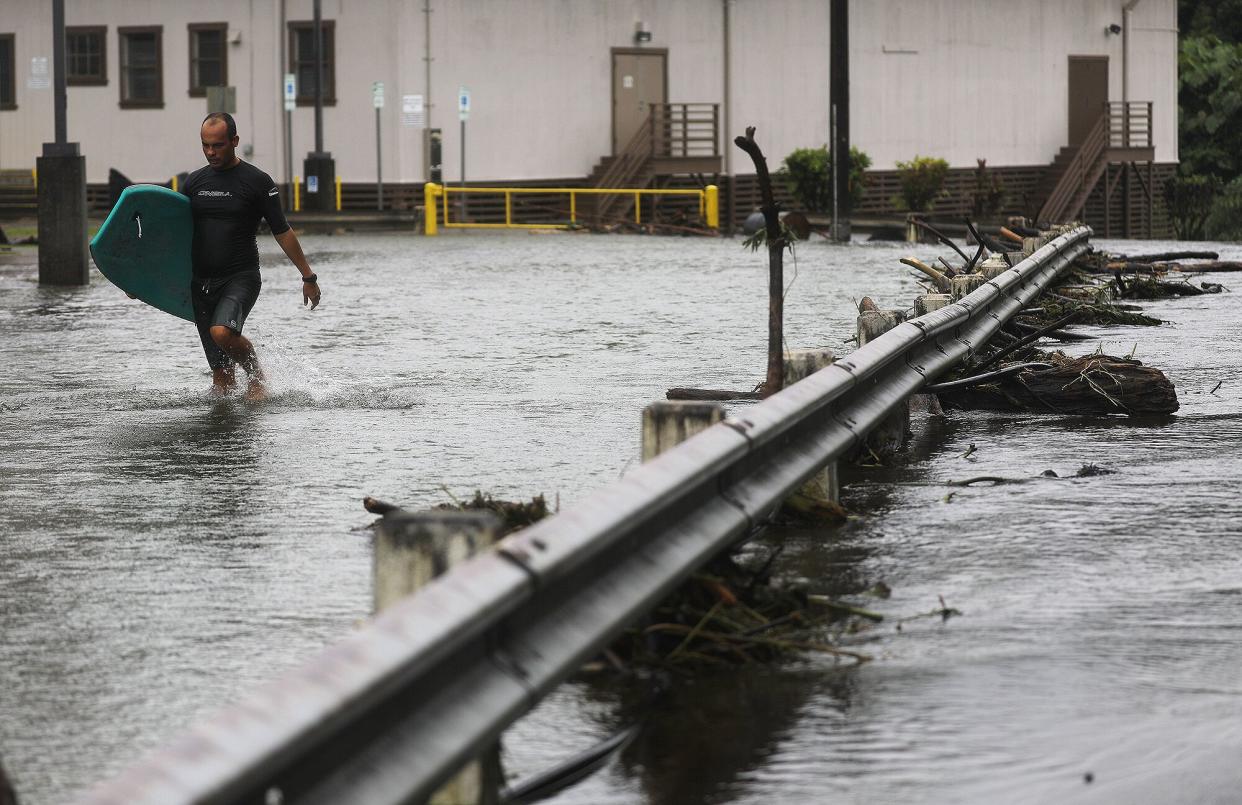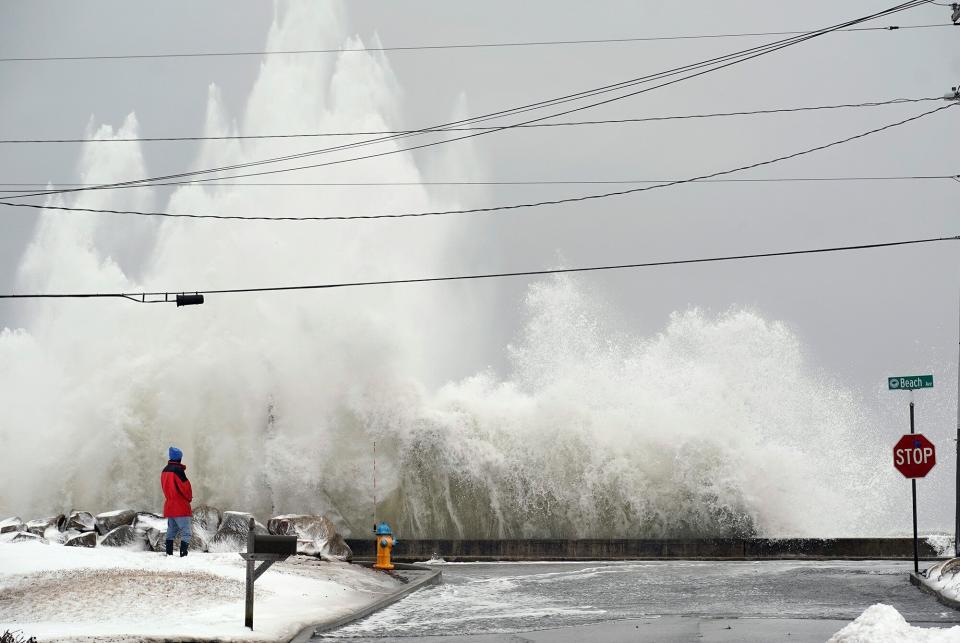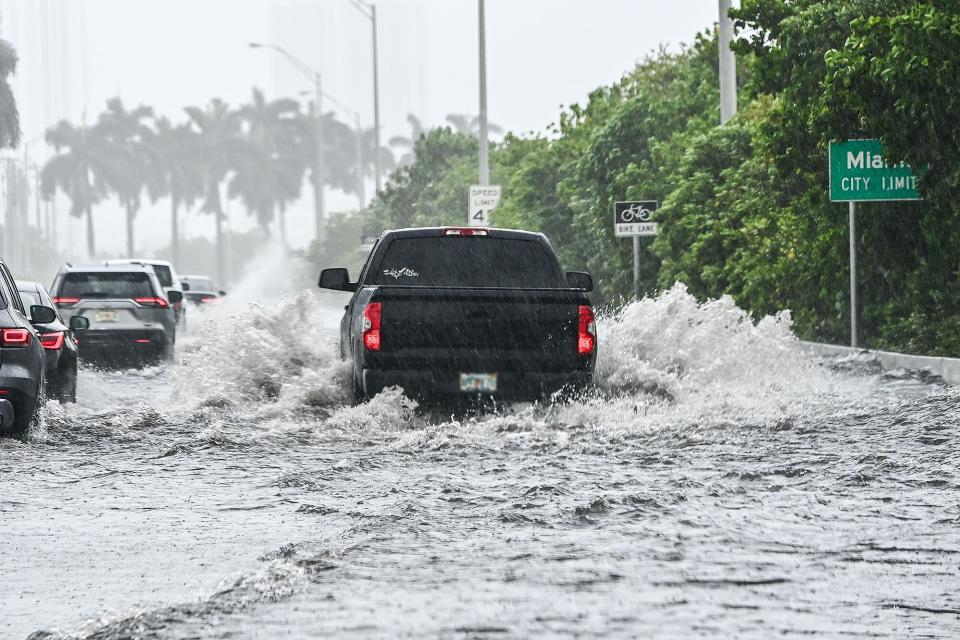New NASA Study Warns Of Increased High-Tide Flooding On Every U.S. Coast in the Mid-2030s

Mario Tama/Getty Images
A new NASA study is warning of a significant increase in flooding on all United States coastlines beginning in the 2030s.
Rising sea levels and a specific lunar cycle will spark a decade of "dramatic increases in flood numbers" in coastal cities all across the country, according to the study, which was led by members of the NASA Sea Level Change Science Team from the University of Hawaii.
High tides are expected to "exceed known flooding thresholds" more often, with some potentially occurring in "clusters" of a month or longer based on how the moon, Earth, and the sun are positioned, per the study. The gravitational pull could leave those living on the coast "with floods every day or two."
"Low-lying areas near sea level are increasingly at risk and suffering due to the increased flooding, and it will only get worse," NASA Administrator Bill Nelson said in a statement. "The combination of the moon's gravitational pull, rising sea levels, and climate change will continue to exacerbate coastal flooding on our coastlines and across the world."

Gregory Rec/Portland Press Herald via Getty Images
High-tide floods are already causing problems for coastal communities across the U.S. In 2019, the National Oceanic and Atmospheric Administration (NOAA) reported more than 600 such floods, according to NASA's press release. The significance of these floods depends on how the moon, Earth, and sun are positioned.
A "wobble" in the moon's regular orbit typically takes 18.6 years to complete, according to NASA. In one half of the cycle, high tides are lower than normal and low tides are higher than normal. The opposite effect occurs during the second half due to the moon's gravitational pull, creating an increase in flood numbers.
RELATED: Dramatic Photos Show Damage Flash Floods Have Caused at Zion National Park: 'A Very Real Danger'
U.S. mainland coastlines, Hawaii, and Guam will likely see the most significant effects when the moon's amplifying cycle returns in the mid-2030s, according to the study. Northern coastlines, including Alaska, should see a similar spike in flooding the following decade. (Data for this study was collected by observing 89 tide gauge locations in every coastal U.S. state and territory, minus Alaska.)
Phil Thompson, an assistant professor at the University of Hawaii and the lead author of the new study, believes "the accumulated effect" of flooding will have the biggest impact on coastal communities over time. He worries about the tendency to overlook the issue because high-tide floods involve smaller amounts of water.
"But if it floods 10 or 15 times a month, a business can't keep operating with its parking lot under water," Thompson said in the press release. "People lose their jobs because they can't get to work. Seeping cesspools become a public health issue."

CHANDAN KHANNA/AFP via Getty Images
RELATED: Heavy Rain from Storms Causes Flash Flooding in N.Y.C. Subways, Strands People in Cars on Highway
Nelson said the information provided by NASA's Sea Level Change Team will help scientists "plan, protect, and prevent damage to the environment and people's livelihoods" moving forward.
"From a planning perspective, it's important to know when we'll see an increase," said Ben Hamlington, a co-author of the paper and leader of NASA's Sea Level Change Team. "Understanding that all your events are clustered in a particular month, or you might have more severe flooding in the second half of a year than the first — that's useful information."

 Yahoo News
Yahoo News 
